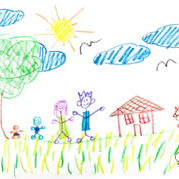What happens once a child is in out-of-home care?
When a child is in out-of-home care, the efforts of the child welfare system and the courts are focused on achieving the following objectives:
- Assuring the safety and well-being of the child while in care.
- Providing services to change the conditions in the home and the behaviors that resulted in the child needing out-of-home placement.
- Working quickly toward moving the child into a safe, stable and permanent home.

The guide for these activities is the Permanency Plan, a detailed written plan which the caseworker develops and submits to the court. At its most basic, the plan includes the services to be provided to the child, the child’s family and the out-of-home care provider to achieve the objectives listed above.
For children in school, their educational progress is monitored and supported through the permanency plan. For children 15 years of age and older, a plan to help them transition to adulthood and independent living must be included.
What is "Permanence"?
Permanence is a fundamental human need. It is belonging. It is roots. For children in out-of-home care, permanence also means developing and sustaining connections to important people in their lives.
For most children in care, the permanency goal is for them to return home – a home that has become safe and stable through the provision of services and supports.
← Back Next →